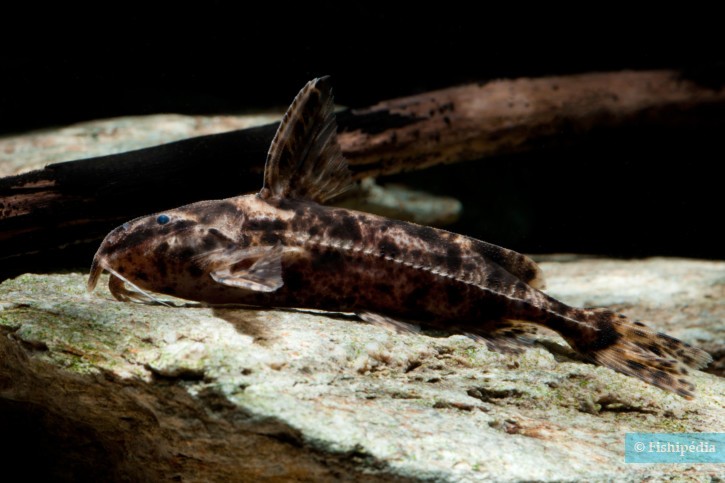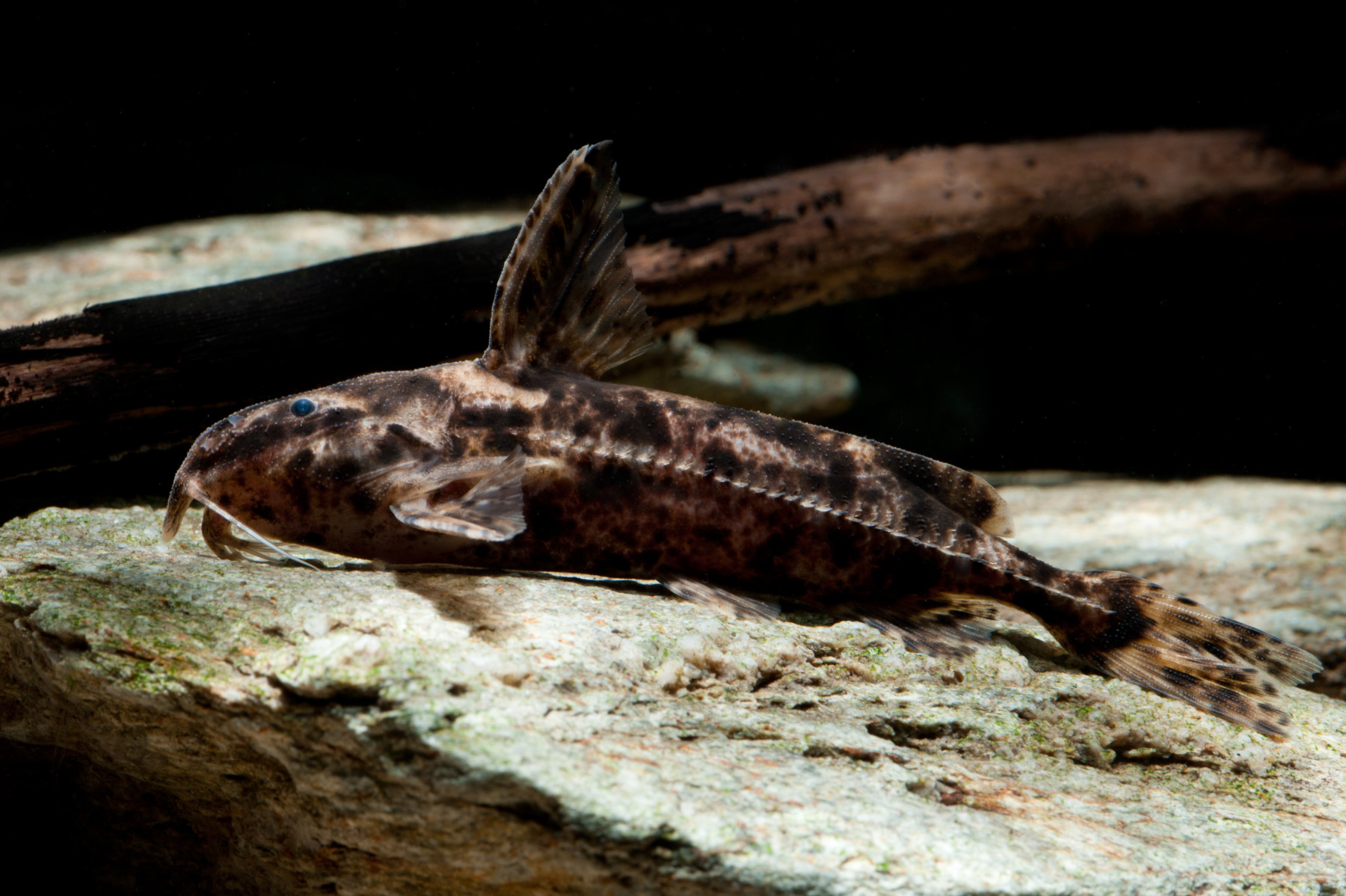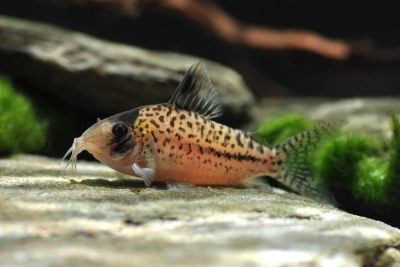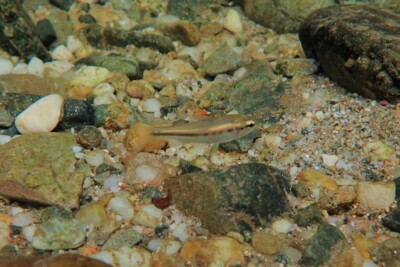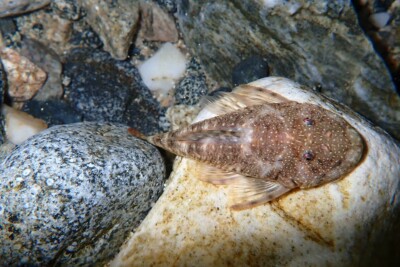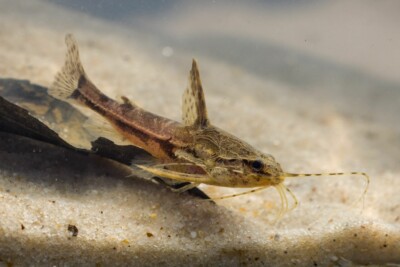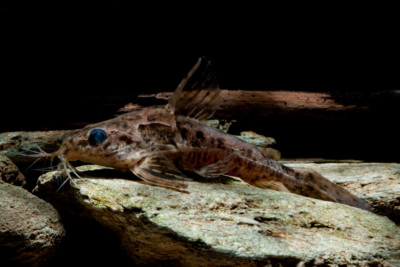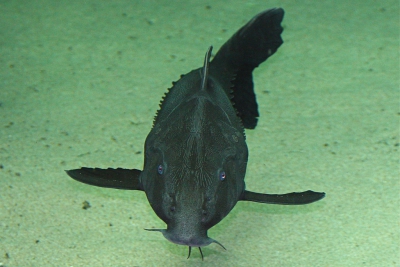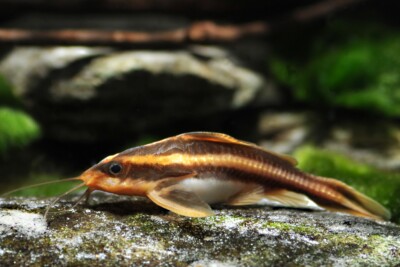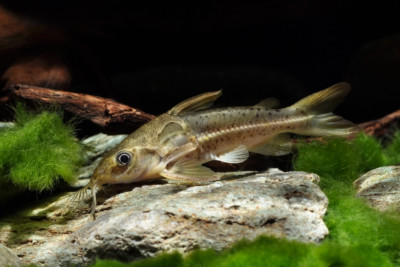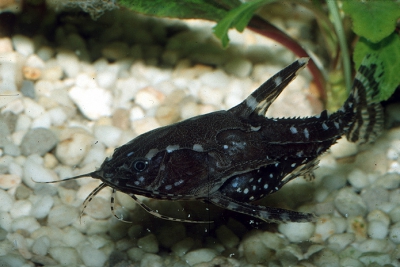Introduction
Rhynchodoras woodsi is a fresh water fish from the Amérique du Sud.
This sheet is currently being prepared. The texts currently proposed come from our data model or are being drafted. To request priority for this content, you can write to us HERE.
Who is it?
Morphology
-
Average size10 cm
-
Maximum size12 cm
-
Average size10 cm
-
Maximum size12 cm
How to recognize This fish ?
This fish has the particularity to possess several pairs of barbels, which allow him to search the bottom and to detect the food thus moved.
Rhynchodoras woodsi measures between 10 and 12 cm. This fish is bicolore with a predominantly marron and beige body.
Behaviour & Life cycle
-
dietomnivorous with carnivorous tendency
-
Sociabilityliving in a group or alone
-
territorialNo
-
Way of livingnocturnal
Rhynchodoras woodsi is a fish living in a group or alone naturally found on the bottom. This species is omnivorous with carnivorous tendency . This fish lives mainly at night. Usually, it leaves its hiding place and starts to be active once it gets dark.
n general, this species does not care much about other animals crossing its path.
Reproduction
-
Reproductiondont le mode de reproduction est encore inconnu
Rhynchodoras woodsi is a fish dont le mode de reproduction est encore inconnu.
Harmless species
This species does not represent any particular threats to humans when encountered in its natural environment.
Origin and distribution
Conservation status of populations (IUCN)
What is its habitat?
Natural environment characteristics
-
Temperature24 - 26 °C
-
pH (acidity)5.8 - 7
Biotope presentation
Species of the same biotope
Fishkeeping
Not recommended
We do not recommend keeping this species in an aquarium. It has unpredictable needs which, if not met, generate significant stress, potentially leading to a shorter life expectancy, an interruption of its growth or the development of pathogens.
To go further
Sources & Contributions
Participation & Validation
The Fishipedia team and specialist contributors are committed to providing high-quality content. However, although the information comes from scientific sources or testimonials from specialists, the cards may contain inaccuracies.

Benoit Chartrer
Translation
Translation done with the valuable contribution of our translators, who make this information available to a wider audience. We sincerely thank them for their commitment.
Scientific partners
Species of the same family
Species of the same biotope
